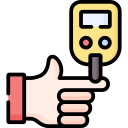On oral hypoglycaemic agents
- Of the diabetes tablet therapies only metformin comes in a liquid, the others cannot be used with a NG/J tube. Stop all other agents and contact the diabetes team.
On GLP-1 agonist sub-cut injections
- If there is no other contra-indication (acute GI disturbance, pancreatitis) this can be continued.
On insulin
- In an emergency please continue long acting insulin (if the patient is on this) and start a variable rate insulin infusion to run alongside the feed. Please contact the diabetes team as soon as practicable.
- Never withhold all insulin.
- In daytime hours please contact diabetes team for advice.
